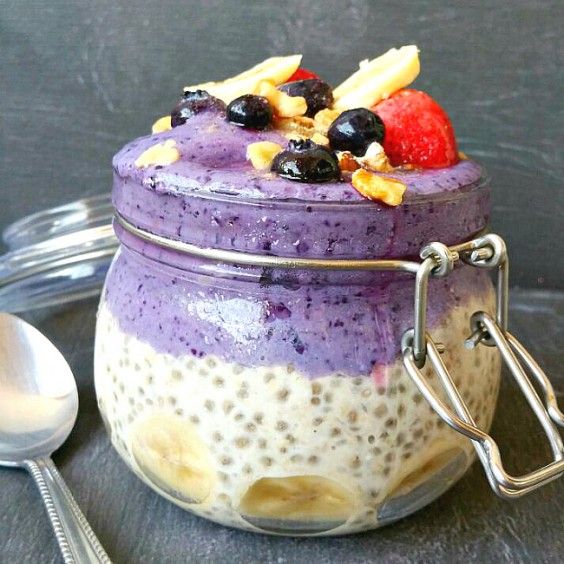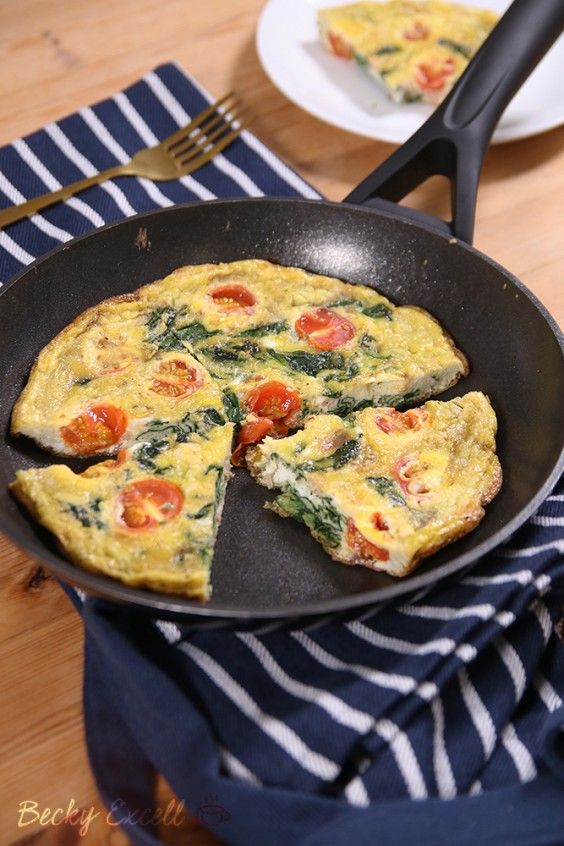The world is going ga-ga over gut health these days — and for good reason. With Crohn’s disease, irritable bowel syndrome (aka IBS), and even plain old stress-related digestive distress becoming more prevalent these days,
While the jury’s still out on what exactly causes the pain, bloating, and gassiness that accompany these gastrointestinal disorders, one thing that’s been shown to help manage the symptoms is making some dietary tweaks — specifically, avoiding fermentable oligosaccharides, disaccharides, monosaccharides, and polyols.
Kind of a mouthful, huh? More commonly known as FODMAPs, they’re short-chain carbohydrates (aka sugars and fibers) found in some dairy, fruits, veggies, and wheat that those of us with digestive ailments can’t quite stomach — literally.
It’s always best to consult your GI doctor before starting any elimination diets to treat gut health. But if you’re experiencing symptoms and get the go-ahead from the doc, you may want to give the low-FODMAP life a whirl.
The diet is said to be restrictive — and we won’t sugarcoat it, it can be — but with these breakfast-to-dessert recipes up your sleeve, you won’t feel like you’re missing out too much.
1. Low FODMAP breakfast stuffed potatoes

Breathe a sigh of relief and do a happy dance: Bacon is a low-FODMAP food!
Still, rather than gorge on it for breakfast, opt for the moderation route and pair just a few strips of it with kale as the stuffing for these healthier “loaded” potatoes.
2. Low-FODMAP banana nut pancakes

With a few simple tweaks, you can still enjoy classic banana pancakes on a low-FODMAP diet. Make sure your fruit is on the unripe side and that you’re using gluten-free oats.
3. Berry banana oat breakfast parfait

No more choosing between a smoothie or overnight oats for breakfast.
This recipe not only gives you both (adorably served in a jar, no less), but makes sure to use lower FODMAP berries and plant milk to make the meal as easy as possible to keep your gut happy.
To keep this truly low-FODMAP, we recommend splitting this recipe into two smaller servings; 1/2 cup of this recipe would be considered closer to moderate or high-FODMAP, according the Monash app.
4. Low-FODMAP frittata

With just four low-FODMAP ingredients, this might be the most fuss-free frittata ever.
The prosciutto makes it just rich enough, but if you absolutely cannot fathom a frittata without cheese (and can tolerate the dairy), opt for a lower-lactose kind, like feta or cheddar.
5. Peanut butter banana granola

A modest number of almonds and a higher ratio of pumpkin and sunflower seeds keeps this granola safely in low-FODMAP territory.
While there are only two tablespoons of added sweetener in the entire batch, go for the brown sugar instead of the honey option.
6. Low-FODMAP quinoa berry breakfast bake

As delicious as oatmeal is, we could all use a break sometimes. Replace it with fiber-rich quinoa in this fruity but hearty breakfast bake.
You could dig into a generous serving of this and still stay within the low-FODMAP boundaries. Plus, you’ll have plenty left over for breakfast throughout the week.
7. Roasted carrot soup
Roasting your carrots before pureeing them gives the final result a delicious, caramelized sweetness without a hint of added sugar.
Balance it out with earthy herbs, warm cinnamon, and a kick from the ginger, and you’ve got yourself a pretty standout soup. It certainly feels like fall, but it’s great all year round.
To keep this low-FODMAP, you can skip the celery (considered a high-FODMAP if there are two stalks). You can also split this into four servings, instead of two, to bring this down to medium-FODMAP territory with the celery.
8. No-mayo potato salad with herbed bacon and eggs
Traditional potato salad usually contains both garlic and onions, both high-FODMAP foods you’ll want to avoid.
This version is careful to use only the top portions of green onions to get the same flavor without the unwanted side effects. It also opts for a lighter olive oil dressing instead of mayo.
9. BLT and avocado quinoa salad with maple vinaigrette
A lot of the low-FODMAP diet is about being mindful of portion sizes for things that might aggravate your GI tract. Take this salad, for instance:
Sure, it contains avocado and cherry tomatoes, which are high-FODMAP foods, but the blogger gives tips on how to decreases the amount of each. That way, your taste buds can enjoy them and your body can tolerate them.
10. Veggie packed low-FODMAP soup
Just because certain fruits, veggies, and whole grains are off-limits, that’s no reason for fiber intake to get compromised on a low-FOMAP diet.
There are plenty of ways you can still get that roughage in, and this soup is a fantastic example. With collard greens, carrots, and quinoa, it offers plenty of fiber without upsetting your stomach.
11. Curried kale salad
Since garlic- and onion-filled bottled dressings aren’t an option for low-FODMAP eaters, it’s a chance to get creative with homemade alternatives,
This one, with tahini, coconut aminos, and curry powder is both rich and robust. It holds up well to the hearty de-stemmed kale leaves, which you can massage with the dressing before serving.
Pro tip: Golden berries, also called mulberries, are included as a garnish in this recipe, however, there’s some debate in the low-FODMAP community about whether or not these are a good idea. If you’re on the fence, trade them from blueberries or strawberries instead.
12. Mixed salad with turmeric vinaigrette
Turmeric and apple cider vinegar are known to help gut health, which is often part of what a low-FODMAP diet tries to address. Both foods are used in the dressing here, so while this salad may look simple, it boasts some pretty powerful benefits.
13. Low-FODMAP maple mustard chicken
With the addition of a quick sweet-and-spicy glaze, you can turn plain old chicken and potatoes into a dinner you can proudly entertain with, whether you’re feeding low-FODMAP guests or not.
Just check the label on your mustard to make sure it’s free of garlic; plenty of varieties should still make the cut.
14. Acorn squash stuffed with herb quinoa
If it’s true that we eat with our eyes first, then these squash boats are the perfect way to stir up an appetite.
They’re colorful, beautifully presented, and fragrant from the roasted veggies and lemony quinoa — you know they’re delicious even before you dig in. All kinds of Instaworthy.
Please note that acorn squash can be a trigger for some people, and it’s not yet listed in the Monash app. As an alternative, you can stuff the filling into red peppers instead.
15. Meatballs with fresh basil and Parmesan
Garlic is a high-FODMAP food, but if you can’t imagine meatballs without it, this recipe has your answer: garlic-infused oil.
Simply cook some cloves in olive oil, then remove them so all you have left is super fragrant cooking fat. Sauté your meatballs in it and you’ll enjoy authentic flavor while staying symptom-free.
16. Low-FODMAP Thai pra ram tofu
The low-FODMAP diet has a confusing love/hate thing going on with soy, so as far as tofu goes, stick to the firm and extra firm varieties.
Here, the plant based protein is smothered in a peanut butter and coconut milk sauce, dispelling all notions that tofu is tasteless.
17. Bibimbap nourishing bowl
This Korea-inspired macro bowl fires on all nutritional cylinders while keeping the FODMAPS to a minimum.
With wheat-free brown rice, extra-firm tofu, stem-free greens, and a sunny-side-up egg to top it off, it’s proof that even with food sensitivities, eating well is totally possible.
18. Turkey meatloaf
Omitting the garlic, swapping the onion for dried chives, and nixing the bread crumbs all make this meatloaf lower in FODMAPs than the traditional loaf.
Go a step further with freshly pureed tomato instead of ketchup for a lower-sugar glaze. You’ll have plenty of leftovers to enjoy this meal again during the week, and it’ll taste anything but dry tomorrow.
19. Farfalle with roasted red peppers and parsley
Gluten-free pastas and garlic-infused oils are kitchen staples for many low-FODMAPers. Both ingredients come together in this easy recipe, which can be whipped up in 15 minutes thanks to jarred peppers and capers.
Pro tip: Can’t do pasta without cheese? We get it. Throw in a compliant variety like feta or Parmesan.
20. Healthy almond chocolate layer bars
From the oaty crumb topping to the silky chocolate in the middle, these taste every bit as decadent as your regular layer bars.
However, these come with carefully chosen ingredients to keep them a bit healthier, and a bit kinder, to your gut. If low-FODMAP life comes with dessert like this, things just got a bit easier.
It’s important to note that the Monash app says that 2 tablespoons of almond butter per serving is a bit too much to truly call this a low-FODMAP recipe, so reduce it down to 1 tablespoon instead.
21. Key lime raw cheesecake
The lactose in dairy can be hard on the gut, so go vegan with your cheesecake to keep it low in FODMAPS, with a base of heart-healthy nuts instead.
Pro tip: Don’t forget to soak the nuts before you use them; the extra step is crucial for making them more easily digestible.
22. Strawberry chia rhubarb crisp
Rhubarb may not be an ingredient you cook with often, but if you’re trying the low-FODMAP thing, you’ll make friends with it fast.
The low-sugar fruit’s tartness is a perfect contrast with the sweeter strawberries in this wholesome crisp, which can easily be made vegan if you wish.
23. Healthier vegan chocolate mousse
Finding a good-quality dark chocolate for this mousse is key for two reasons: First, it’ll make it taste extra good (duh), and second, it’ll keep the coconut milk based dessert free of dairy. No added sugar in here, either!
24. Low-FODMAP sugar cookies
We know what you’re thinking: Sugar cookies on a diet that frowns upon sugar?! Hey, they’re possible when you’re using FODMAP-approved maple syrup instead of the refined white stuff.
Oh, and making the batter with gluten-free flour. Still, these aren’t totally free of potentially triggering ingredients, so stick to one cookie at a time and see how it goes with your gut.
In order to stay in low-FODMAP territory, limit your serving size to 1 to 2 cookies. We know it’s hard because they’re so good, but your gut will thank you later.
25. Bounty bites
This homemade take on Bounty bars leaves behind all the glucose syrup and sugar of the original and simply uses coconut and chocolate chips instead. Even better, these freeze super well, helping you stick to moderate portions.
Digestive distress sucks: the anxiety that comes from never knowing when it’s going to strike, the pesky, painful symptoms themselves, and feeling like you can’t even eat your favorite foods like everyone else.
While the low-FODMAP diet can be challenging to stick to, we hope this roundup takes some of the pressure off. That way, you can enjoy a close-enough version of the foods you love and keep your gut happy at the same time — and maybe even have a little fun cooking in the process.


